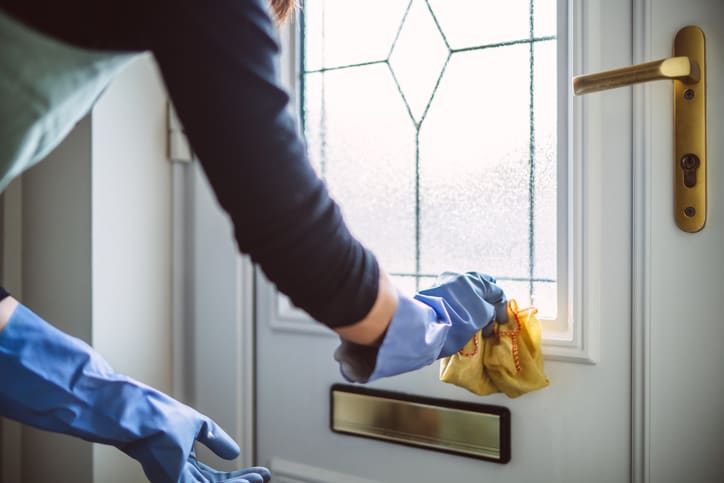Hiring a babysitter to watch your children can be a nerve-racking process for parents. Whether you need to go to work or just want to have a date night, you want to make sure your kids are safe and that the sitter knows what to do in case of an emergency. First and foremost, before you hire a sitter, you should check references thoroughly. It’s wise to conduct a criminal background check, too.
Once you’ve hired a sitter, have an open, clear, and informed conversation with them about safety. Let them know that safety rules are crucial to you and an important part of this job. There are several different things to check off your list during this conversation. Take a look at articles like this one from the Canada Safety Council for a helpful overview.
1. Give the babysitter a tour of your home
Once your sitter is in place, address safety concerns and discuss the items on this checklist:
- Demonstrate how to use all safety devices that you have installed (e.g., gates, latches, locks, smoke and carbon monoxide detectors, etc.)
- Point out where you store important supplies, such as flashlights, first-aid kits, and fire extinguishers.
- Identify any areas of your home that are off-limits to your children.
- Clue your sitter in on your kids’ favorite hiding spots.
- Familiarize the sitter with your fire escape plan.
2. Provide specific safety information
- Write down everything that you discuss with the sitter so that they have reference materials in your absence. If your sitter is a permanent employee or contractor, incorporate a section on safety expectations in your contract or written agreement.
- Explain the dosage and instructions for any medications; write these down clearly so there’s no confusion.
- Tell the caregiver about specific foods the child eats or shouldn’t eat, especially allergy triggers.
- Explain the child’s bedtime and naptime rituals.
3. Explain your expectations thoroughly
- You can do this by laying out your rules before your sitter even takes the job. For example, your rules might include that they’re not allowed to have friends over and that there’s no smoking in the house or sleeping on the job. It is highly recommended that you write the rules down and discuss them with the sitter ahead of time.
- Tell your sitter to avoid texting, talking on the phone, or using the internet, unless it’s absolutely necessary—if they’re distracted, they’re not safely watching the kids.
- Emphasize that children should not be left alone—even for one second.
- Remind the sitter they should not post details of any babysitting job on social media, and they should never post photos of your family or home.
- Encourage the sitter to call if they have any questions.
- Go over rules for leaving the house. Is your sitter allowed to take your kids to the park? Can kids play in the backyard? Is the sitter allowed to drive your kids anywhere? If so, clearly communicate protocol for car seats and seat belts.
4. Offer a refresher on important safety rules
- Remind the sitter to place a baby on their back to sleep at night and at naptime.
- Reiterate that there should be nothing in the crib but the baby. Use sleep clothing and a wearable blanket or sleep sack.
- Review Abusive Head Trauma (shaken baby syndrome) and its dangers.
- Check that the sitter has taken classes on CPR, first aid, and child safety; if not, you can inform them how to get first aid and CPR training.
5. Devise an emergency plan
- Discuss how the sitter can reach you in case something happens.
- Arrange for a neighbour or other trusted adult nearby to be available if there’s a problem; introduce this person to the sitter.
- Post your contact information and important emergency information on the refrigerator.
6. Leave parting instructions
- Review last-minute instructions, written down along with all of your other guidelines.
- Remind the sitter to keep doors and windows locked and turn outside lights on in the evening.
- Instruct the sitter to never open the door to anyone—unless you specifically asked them to do so.
- Make sure the sitter knows your plans and when you will return.
- Finally, as you go, reiterate, “Don’t hesitate to call me.”
When hiring a new sitter, it’s a good idea that you have trial days (with pay) before offering the job on a permanent basis. This will help draw attention to any problem areas or safety issues that need to be addressed.
Once your sitter becomes a permanent employee or contractor, keep the lines of communication open and address any matters that come up, as well as any ways to improve things from both a safety standpoint and an overall care standpoint. Doing so will help you pick up on any signs of stress or dissatisfaction. And at the end of the day, a happy sitter will lead to happier children.



